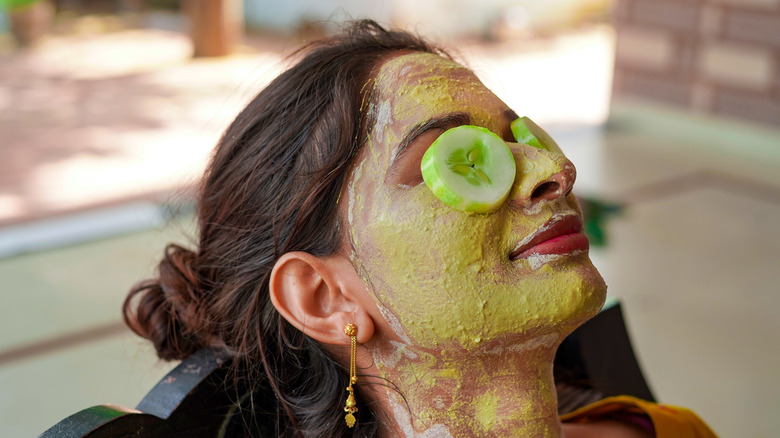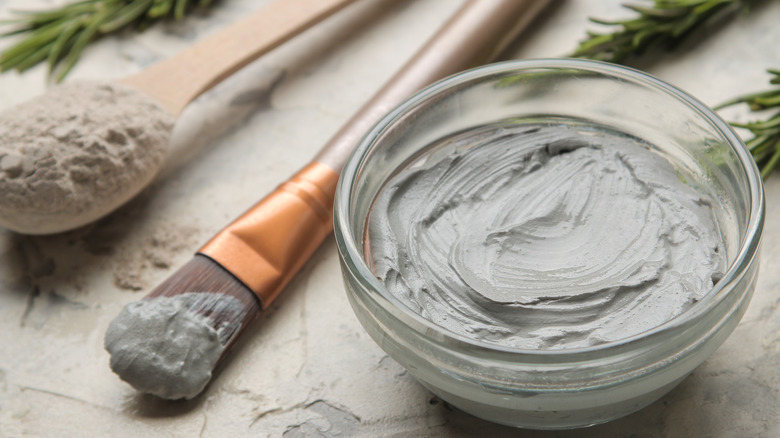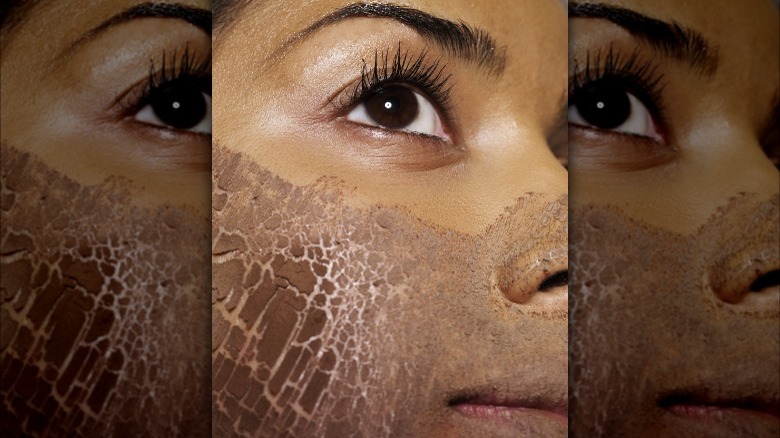How Often Can You Use Clay Or Mud Masks Without Damaging Your Skin?
Human skin takes a beating every day thanks to an onslaught of harmful ultraviolet rays, air pollution, sweat, pore-clogging makeup, and other unsavory stuff it comes in contact with. As a result, many people turn to mud or clay face masks to purify and rejuvenate the skin, especially on the face. However, even the most well-intentioned face masks can have some adverse side effects if done in excess. This is because facial skin is thinner and therefore more delicate than the skin on other parts of the body (just touch your leg and then your cheek to compare). Facial skin also sports many more pores and oil glands, both of which vary from person to person. This is why some people struggle with acne, while others battle severely dry, dehydrated skin.
Using too many (or the wrong type of) masks for your skin type can seriously throw the skin's all-important pH balance way out of whack, making skin woes worse, not better. Still, clay or mud masks can be a useful tool in the world of dermatology, provided they're used correctly.
Follow this schedule when using clay masks
People frustrated with acne or oily skin often turn to clay masks to take the edge off. The tool can be an effective way to mitigate such skin issues because clay has a well-founded reputation for absorbing oil and also pulling unsightly impurities from the skin (the latter is often why they're popular among people who don't necessarily have oily skin). While this is a win/win situation when done correctly, there is certainly too much of a good thing when it comes to clay masks. Clay masks should really only be used at most three times per week, a maximum of 15 minutes per session, per Healthline. This is because they are so effective at drawing oil out, and overshooting that margin can cause a whole host of other skin imbalance problems. So even if the mask you purchased says it can be used daily, it's probably best to take your foot off the gas a little and exercise some clay mask restraint.
Side note: There are a lot of different types of clays out there, so do your due diligence and select one that's not only ideal for your skin type but also doesn't contain any harsh chemicals or other irritating fillers. Certain types of clay, like Fuller's earth clay, are more intense and shouldn't be used more than once per week, Verywellhealth says.
How mud masks differ from clay
People often refer to clay masks and mud masks interchangeably, but there are actually some key differences. Clay masks are made primarily of clay, obviously, whereas mud masks can employ clay, as well as other types of silts, minerals, and so on, Vogue India explains. Mud masks are particularly helpful for people with chronic dermatological concerns like rosacea or eczema, although, like clay, they are also helpful for people with oily or combination skin. Also similarly to clay, mud masks can have a very drying effect, possibly even more so. For that reason, dermatologist Dr. Manjot Marwah told Vogue India that people with oily skin should only use mud masks a maximum of one time per week, and those with sensitive and/or dry skin should space it out even further — every two weeks.
Another beauty expert, Zoya Ali, also told the publication to steer completely clear of mud masks during exceptionally cold winters, as the mask could add insult to injury with all of that dry, cold air swirling around. Above all else, use some common sense when applying any type of mask, and always discontinue use if it irritates or otherwise just doesn't suit your skin.


